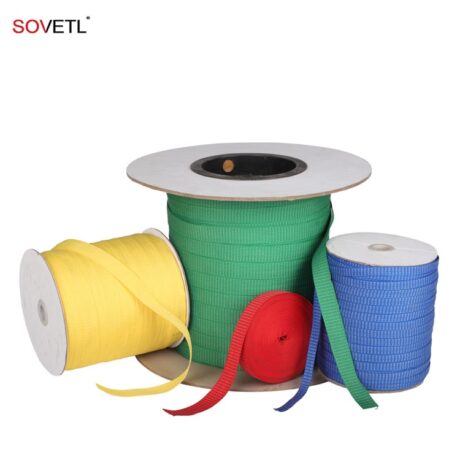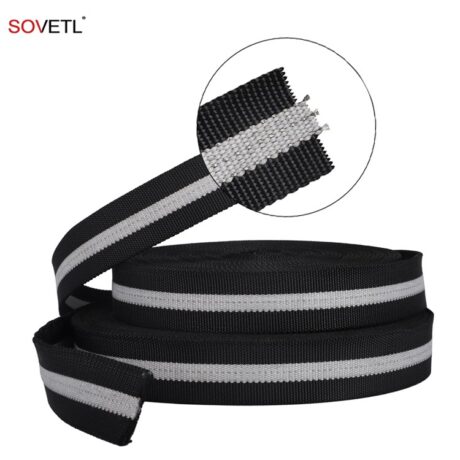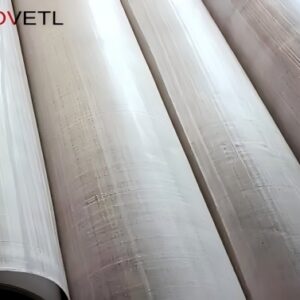As robotics technology advances, the need for innovative materials grows. Among these materials, custom conductive webbing has become essential. This fabric combines flexibility with conductivity, offering robust solutions for next-generation robotics. Whether it’s for wearable devices, industrial robots, or autonomous systems, conductive webbing in robotics is transforming how robots operate. Let’s explore how custom conductive webbing solutions are driving robotics forward.
Manufacturers tailor these custom conductive webbing solutions to meet specific design needs. Whether it’s for robotic limbs or power distribution systems, engineers can customize the material to fit the exact requirements of a project. ⚙️
Why Custom Conductive Webbing is Crucial for Robotics
Custom conductive webbing provides several key advantages in robotic design, making it indispensable for next-gen robotics. Here’s why:
1. Efficient Electrical Connectivity
Robots rely heavily on electrical systems. Whether it’s powering motors, sensors, or communication systems, electrical connectivity is vital. Conductive webbing in robotics ensures that electrical signals flow smoothly between components, eliminating issues like signal interference or power loss. This flexible electrical connection allows for seamless communication between the robot’s systems, improving overall performance.
2. Flexibility and Durability
Unlike rigid cables, conductive fabric webbing is incredibly flexible, allowing it to move with the robot without affecting its functionality. This flexibility is crucial for robots like robotic arms or soft robotics, where constant movement is required. The webbing withstands wear and tear while maintaining conductivity, ensuring long-term durability.
3. Lightweight Design
Weight is always a critical factor in robotics. Conductive webbing is lightweight, making it easier to build agile robots that can perform complex tasks with precision. Reducing weight without compromising strength or performance improves a robot’s speed and efficiency.
4. Customization for Specific Needs
Every robot has its unique design and requirements. With custom conductive webbing solutions, engineers can tailor the webbing to meet specific conductivity, flexibility, and strength needs. Whether a robot needs flexible power cables for its joints or conductive fabric webbing for wearable robots, customization ensures the material fits perfectly within the design.

Applications of Custom Conductive Webbing in Robotics
The versatility of custom conductive webbing has made it a go-to material in several robotic applications. Here’s how it’s changing the game:
1. Soft Robotics
Soft robotics involves creating robots that are flexible and adaptable. These robots mimic natural organisms and require materials that can bend, stretch, and absorb energy without breaking. Conductive webbing in robotics is ideal for soft robots, as it integrates into the flexible components while ensuring continuous electrical connectivity. This makes the fabric perfect for actuators, sensors, and power distribution within soft robotic systems. 🤖

2. Wearable Robotics
Wearable robots, such as exoskeletons or powered prosthetics, use conductive fabric webbing to connect various electronic components. The webbing ensures the electrical signals flow efficiently between the robot and the human body, allowing for better control and synchronization.
3. Autonomous Vehicles and Drones
For autonomous systems, like drones or self-driving vehicles, custom conductive webbing connects sensors, motors, and communication systems. It helps reduce the overall weight of these systems while maintaining a high level of electrical efficiency. By using conductive fabric webbing, engineers ensure better performance, longer battery life, and reduced energy consumption in autonomous robots. 🚁
4. Industrial Robots
Industrial robots are crucial for tasks like assembly, welding, or material handling. Conductive webbing plays a vital role in ensuring that these robots have continuous power supply and signal transmission, especially in areas that experience constant movement or stress. The flexibility and durability of conductive fabric webbing ensure reliable electrical connections in high-performance industrial robots.

Benefits of Custom Conductive Webbing in Robotics
Integrating custom conductive webbing into robotic systems offers several benefits:
-
Enhanced Efficiency: The webbing ensures seamless electrical connectivity, leading to better robot performance.
-
Design Flexibility: Engineers can tailor the webbing to fit specific applications, improving the robot’s functionality.
-
Increased Durability: The durability of conductive webbing ensures long-lasting use in demanding robotic environments.
-
Cost-Effective: Custom webbing solutions help reduce costs by replacing heavier, more complex wiring systems.
Custom conductive webbing is more than just a material—it’s a game changer for the future of robotics. From soft robots to wearable devices, the flexibility, durability, and electrical connectivity offered by conductive webbing in robotics are helping to redefine how robots interact with their environment. Whether you’re designing for industrial automation or advanced drone systems, custom conductive webbing solutions provide the performance and customization needed for next-gen robotics. 🌟




